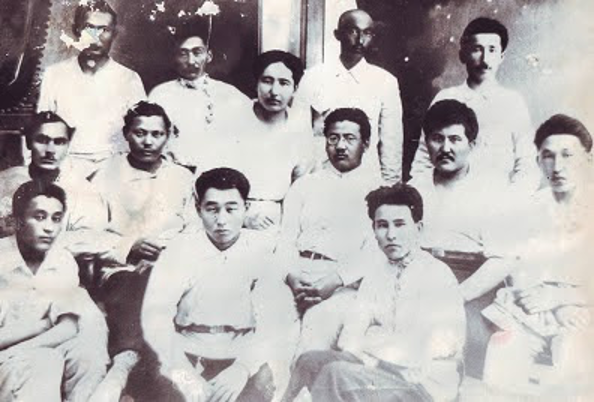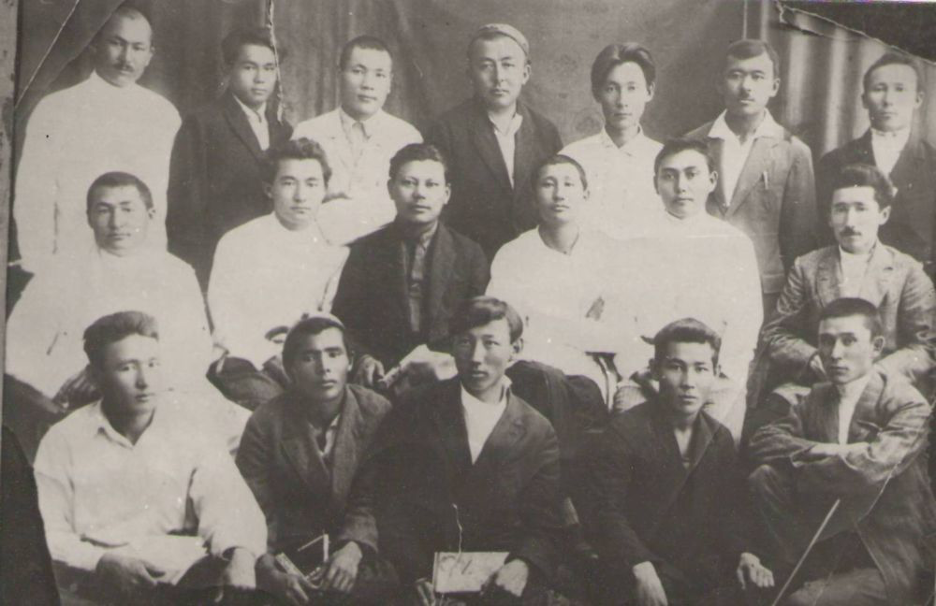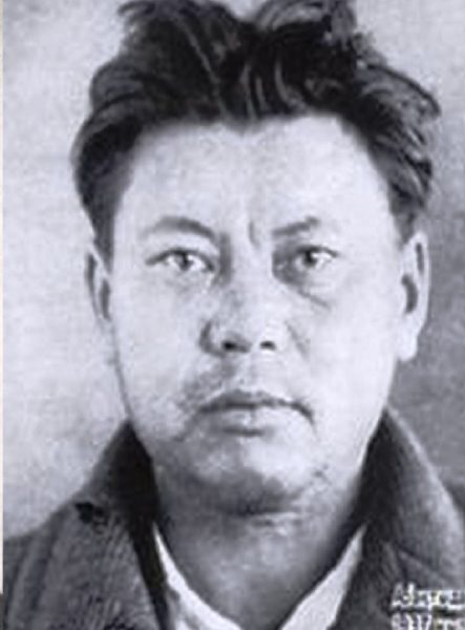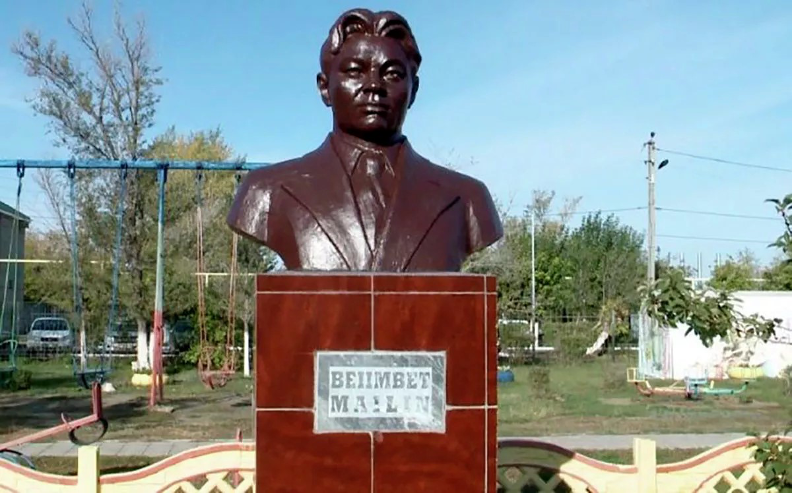“Enbekshi Kazakh” editorial newspaper
This year, Beimbet Mailin turns 130 years old.
Beimbet (Bimukhamed) Zharmagambetuly Mailin is a Kazakh writer, playwright, one of the main authors of Kazakh literature, who has about 250 poetic, over 100 prose and 20 dramatic works.
A writer was born in the Aktobe landscape unit of Taranovsky district of the Kostanai region on November 15, 1894. As a child Beimbet was deprived of his parents and grew up with his grandmother, who managed to educate the boy, despite her poverty.
He received his primary education from an aul (village) mullah, and later, had entered an aul (village) madrasah for two years. A desire for knowledge led him to Troitsk, to the “Uazifa” school. He graduated from the Russian-Kazakh school in Kostanai, studied in the “Galiya” madrasah in Ufa. In 1916-1922, Beimbet Mailin worked in his native aul (village) as a teacher. Meeting with professional writers – Mukhamedzhan Seralin and journalist, poet Sultanmakhmut Toraigyrov, further strengthened Beimbet’s desire for the literary pursuits. In 1922-1923, he worked in the “Enbekshi Kazakh” newspaper, released in Orenburg. In 1923-1925, he worked in the “Aul” (village) newspaper of the Kostanai district. In 1928-1932, he worked as a literary employee, editor of the “Qazaq tili” (Kazakh language) newspaper. Also, in 1932-1934, he served as the head of the department and editor of the “Socialist Qazaqstan” newspaper. In 1934-1937, he was an editor of the “Qazaq adebieti” (Kazakh literature) newspaper.

B.Mailin with young Kazakh writers
Beimbet Mailin’s creative path began with the creation of poetic works. The first poem published in the periodical press was called “Dumas” (“Aikap” magazine, 1914, No. 12). In the poems “Traits of Muslim”, “Necessity”, “Cattle”, “Wealth”, “Summer Evening”, Mailin described his thoughts about life, injustice and the strong beat of the nation.
(1912-1915)
The “Bloody Fog” poem is dedicated to the events of the national liberation uprising of 1916. By pinning his hopes for the February Revolution, he wrote the poems “In the steppe” and “For the Kazakh”.
The hero of many of Mailin’s poems, short novels and short stories is a formerly battered poor man who has become a builder of a new life. For example, the hero of his lyrics Myrkymbai in the poems “Myrkymbai”, “The poor man’s vexation”, “Give, Myrkymbai, your hands”, “Hey, Myrkymba”" and others. The fundamental changes in the life of the steppe, the collective farm village, collectivization are reflected in the poems “New Song of the village”, “Collective song”, “The Day has Come”, “The Awakened Steppe” (1922-1930).
It is worth noting that Beimbet Mailin is the author of more than ten poems. The first collection of Mailin’s poems was published in 1936 under the title “Marzhan”. Among the written poems are “Bai’s daughter” (Daughter of rich landowner), “Raziya Girl”, “Runaway girl”, “Marzhan”, dedicated to the tragic fate of a Kazakh girl in a pre-revolutionary village, “Kanai”, “Sagyndyk”, “The Old Woman’s Tale”, describing the Civil War and establishment of the Soviet power in Kazakhstan. (1920-1936)
Also, Mailin made a great contribution to the development of the prose genre in Kazakhstan, especially the short story. His first story “The Past” was published in the “Aikap” magazine (1915, No. 10). Among the written stories: “Eighty rubles”, “Equality of the poor man”, “Airanbai”, “Bull pacer”, “Justified labor”, “Red striped fur coat”, “Letter of Shapai”, “Chairman of the Kamil collective farm”, “Black bucket”, “Ulbosyn”, “Mukysh, son of Arystanbai” and others.
Besides that, the writer is known as a talented essayist and feuilletonist. In the collection of essays “On the construction sites of giants” (1934), he reflected a tense life of the Soviet people during the years of industrialization, in the collection of feuilletons “Clippings” (1924), he struggled with remnants of the past in people’s minds.
The most famous of all his works is his first novel “The Monument of Shugi”, written in 1915, revised and released in 1922. In it, Mailin realistically described the fate of a Kazakh girl forced to obey the customs. Later, in his novels, Mailin repeatedly returned to the issue of women’s equality (the stories: “Raushan communist” of 1923, “Beren” of 1935). In 1933, the writer wrote the novels – “The Story of Amirzhan”, “Fifteen Yards”, “On the Stoke”, which describes the struggle for the establishment of the Soviet power in Kazakhstan, as well as collective farm construction.

A photo shows the public figures of Kazakhstan in the 30s of the 20th century – Beimbet Mailin (fourth from left in the second row), Ilyas Zhansugurov, Saken Seifullin, Sabit Mukanov, Zhakan Syzdykov, Abdilda Tazhibayev and others.
The changes in the political system in the steppe are shown as well in the “Azamat Azamatovich” (1935) novel, which was the first part of the conceived trilogy. In 1935, the novel was translated into Russian under the title “Daughter of the Kazakh”. Other novels by Mailin (“Red Flag”, “Neighbors”, “Scramble”) had not been preserved; excerpts from them were published in the “Adebiet Maidany” (Literature front) magazine in 1932-1936.
Therefore, Mailin made a great contribution to the development and development of various genres of drama in Kazakhstan. During 1916-1936, he wrote the stage plays “Mullah Shanshar”, “Affiance”, “Amangeldy Protocol” (along with G. Musirepov), “Taltanbai Orders”, “Front”, "Daughter-in-law and mother-in-law”, “Zhalbyr” (Rough) , “Our horsemen” and others.
The writer’s life and creative path were tragically cut short. In 1937, he was arrested on the charges of the counter revolutionary, bourgeois-nationalist, insurgent-terrorist activities. According to the definition of the military board of the Supreme Court of the USSR, as of February 26, Beimbet Mailin was sentenced to death with immediate execution. / After the execution of the writer, his wife Kulzhamal was arrested and sent to the camp. Even before that, all her children were taken away from her one by one and sent to the orphanages. After her liberation in 1946, she had been searching for the children for a long time. But only four of them were returned. /

The last photo of the writer from the People’s Commissariat for Internal Affairs archive
Only in 1957, by a ruling of the Supreme Court of the USSR as of April 16, Beimbet Mailin was rehabilitated, the sentence was overturned and the case was dismissed for the lack of corpus delicti.

It bears noting that the village, gymnasium in Taranovsky district and street in Kostanai are named after him. A monument for B. Mailin has been erected on the forecourt of the regional center, and the memorial plaque has been opened at the building of the editorial office of the “Kostanai Tany” newspaper. Also, a monument has been erected in the writer’s native village. It bears to remind that the Union of Kazakhstan’s Writers awards the “Beimbet Mailin Prize” for the achievements in the field of literature.
Materials are taken from /biografia.kz / and photos are derived from open sources, from the Taranovsky Historical and Local Lore Museum named after B. Mailin.




